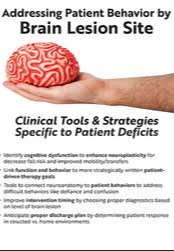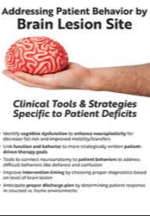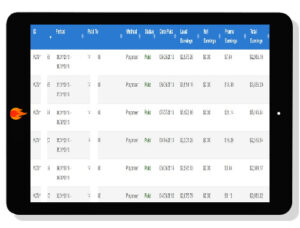By deducing the patient’s experience, the clinician can also prepare for behavioral barriers to engagement and understand the healing process with greater compassion.
Jerome Quellier – Addressing Patient Behavior by Brain Lesion Site
NEUROANATOMY AND THE IMPACT ON COGNITIVE PROCESSING (CASE STUDY ICON)
Basic anatomy of the neuron
Brain Wiring: Commissural fiber tracts for projection, association, and projection
Brain Locations of the lobes and ties to cognitive processes
Cerebellum and its impact on cognition
Case Study 1 Jacob’s anxiety and how pacing the halls became therapeutic
OPTIC SYSTEM & VISUAL PERCEPTION (CASE STUDY ICO)
Optic constructs, anterior-Lateral fiber tracts
Visual cortices, and their unique roles in visual processing
Visual perception: Effect of shear injuries, tumors, and CVA lesion lesions
Case study 1 Why can’t my patient just see the whole worksheet like I do?
Group Exercise: Reviewing vision diagnostics by discipline (PT/OT/SLP)
HOW NEUROTRANSMITTERS DRIVE BUS
Internal communication systems in the brain
Dopamine pathways, effects on cognition and reward system
The mood modulators and serotonin pathways
EXECUTIVE FUNCTIONS IN THE FRONTAL LOB
The Cognitive Pyramid and Moving Patients Up
Skull anatomy, and the effects shear injury on the skull
Shear injury and its effects on anxiety and behavioral health
Therapy implications for SLP/PT/OT/OT
Group Exercise: Review of executive function diagnostics by discipline (PT/OT/SLP)
COMMUNICATION & THE LEFT HEMISPHERIC FUNCTIONS
Broca’s vs. Wernike’s areas
Communication function of the arcuate faciculus
SPATIAL PROCESSING & THE RIGHT HEMISPHERIC FONCTIONS
Neurophysiology vs neuropathology, understanding patients’ nonverbal challenges
Inferential language, social cognition
A sense of time, spatial organization and place.
THE HIDDEN PROCESSORS-THALAMIC INFLUEENCES
Auditory pathways and Neuroanatomy
Thalamic engagement in sensory information
Modulation of sleep, vigilance
MEMORY: HOW THE HIPPOCAMPUS AND THE AMYGDALA PARTNER (CASE STUDY ICON)
Memory processes
Memory types: Right vs. Left hippocampal functions
Memory function: Hypoxia or anoxia
Exercise on memory structures: Effect of exercise on sleep and memory consolidation
Amygdala’s influence upon fear-Executive control through hijacking and based learning
Case study 3 Nile’s hypoxia and long tern rehab outcomes
RECOVERY FROM ACCELERATION/DECELERATION INJURIES: DIFFUSE AXONAL INJURY (DAI)
DAI features microanatomically
CTE: Chronic Traumatic Empathopathy
Where medicines have failed
AGITATION MANAGEMENT STRATEGIES
Learn how to avoid confrontation by having a working knowledge of Rancho Los Amigos levels.
How to avoid escalation
Confabulation and denial—addressing the elephant in the room
ENRICHING CLINICIAN & PATIENT RELATIONSHIPS
The science behind mindfulness and mediation
Resigning in a runaway situation
Would you like a gift? Jerome Quellier – Addressing Patient Behavior by Brain Lesion Site ?
Description:
Neuroanatomy is complex and overwhelming. Clinicians working in rehabilitation are faced with growing caseloads, diminished resources/reimbursement, and increasingly medically complex patients with the expectation of improving outcomes and reducing length of stay. Honing one’s knowledge of clinically-Relevant neuroanatomy or neuropathology can be used to predict dysfunction and provide a framework for assessment and treatment. This is done before the patient meets you. It is easier to formulate treatment plans when possible deficits are identified early. By deducing the patient’s experience, the clinician can also prepare for behavioral barriers to engagement and understand the healing process with greater compassion.
This recording will teach intermediate level neurophysiology and its relationship to cognitive.-Learn linguistic skills and behavioral control. Also, learn mindfulness techniques to reduce stress. The overlying foci of the recording are to arm treating professionals with an improved clinical eye, predicting dysfunction, and expedite the pathway to treatment. Recording content will also include patient focused educational materials for stroke and traumatic brain injury ready to be utilized by treating practitioners.
Here’s What You Will Get in Jerome Quellier – Addressing Patient Behavior by Brain Lesion Site
Jerome Quellier – Addressing Patient Behavior by Brain Lesion Site Sample








